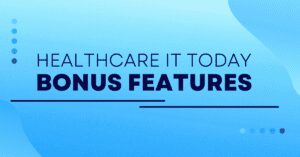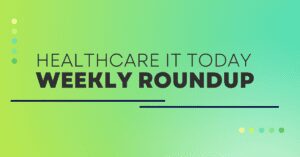 The following is a guest article by Chris Radkowski, SAP GRC Expert at Pathlock
The following is a guest article by Chris Radkowski, SAP GRC Expert at Pathlock
The healthcare workforce operates in perpetual motion. Nurses rotate between shifts and departments, contractors cycle through short-term assignments, and clinical roles are constantly evolving. This endless flux creates one of the industry’s most underappreciated operational risks: excessive or incorrectly assigned access.
In this dynamic environment, every staffing change – whether it’s a new hire, department transfer, or contract completion – should immediately trigger corresponding access updates. Yet when provisioning depends on manual workflows or fragmented systems, the process invariably falls behind operational reality. The consequences are predictable: orphaned accounts accumulate, permissions become outdated, and the organization’s exposure to both internal and external threats expands. In the worst-case scenario, these risks can result in fraud, data breaches, and costly compliance violations and fines.
Healthcare’s unique staffing model fundamentally challenges traditional access controls, making automation not just beneficial but essential for maintaining governance at the pace of modern care delivery.
The Challenge of Constant Change
Unlike most industries where joiner-mover-leaver (JML) events occur at predictable intervals, healthcare organizations face relentless workforce transitions. Clinical staff regularly shift between units and responsibilities. Temporary workers join for brief assignments before departing, often without proper deprovisioning. Part-time schedules, rotating assignments, and shared responsibilities mean individual access requirements can transform dramatically within days.
Each transition introduces potential vulnerabilities. A promoted employee might retain access to previous systems they no longer need. A contractor could maintain elevated privileges after project completion.
Nurses – who often take extra shifts at different hospitals or healthcare facilities due to rising demand, higher pay, and nationwide nursing shortages – may inadvertently retain access to electronic health records (EHRs), medication administration systems, and other sensitive clinical platforms at multiple institutions where they’ve previously worked.
This dynamic nature of the healthcare sector introduces serious access and identity management challenges. When access reviews occur quarterly or rely on manual processes, the window for security gaps widens significantly.
The fundamental issue isn’t malicious intent but operational lag. Provisioning processes dependent on help desk tickets, spreadsheet-based approvals, or isolated HR systems cannot match healthcare’s pace of change. This mismatch creates an environment where outdated access permissions become the norm rather than the exception.
Healthcare’s culture of shared responsibility, while beneficial for patient care, adds another dimension to this challenge. Multiple clinicians may access the same patient records, workstations, and clinical systems throughout a single shift, making it difficult to maintain clear digital accountability trails.
Finally, healthcare’s widespread use of shared terminals adds significant complexity to access management. Hospital floors, clinics, and treatment areas rely heavily on communal workstations, mobile carts, and patient kiosks. While these shared resources streamline clinical workflows, they create accountability nightmares.
When clinicians forget to log out, subsequent users may inadvertently access sensitive systems under incorrect identities. Without robust session tracking capabilities, determining responsibility for specific actions becomes nearly impossible. This accountability gap creates compliance vulnerabilities and eliminates crucial forensic capabilities when security incidents occur.
Traditional identity governance models struggle to keep up with this level of access volatility, increasing the risk of overprovisioning, orphaned accounts, or unauthorized data access. Furthermore, without automated role-based access controls and real-time identity lifecycle management, healthcare organizations may find it difficult to ensure compliance with HIPAA and other regulatory standards. Not complying with HIPAA regulations regarding patient information security can lead to fines and legal action, so ensuring proper protection measures and data privacy is vital.
These issues underscore the critical need for healthcare systems to modernize their identity and access management (IAM) frameworks to support a more flexible, yet secure, workforce.
Where Traditional Solutions Fall Short
Legacy identity governance tools typically assume users maintain static roles and work from fixed workstations. Healthcare operates on an entirely different paradigm where access needs are always shifting.
When governance solutions cannot seamlessly integrate across critical systems like HR platforms, ERP software, and procurement tools, access changes inevitably slip through operational cracks. Reviews become reactive rather than proactive, and provisioning transforms from strategic risk management into tactical cleanup of accumulated problems.
This reactive approach proves particularly problematic in healthcare, where compliance requirements are stringent and audit trails must be comprehensive. Organizations need governance tools capable of adjusting access dynamically, not merely verifying permissions periodically.
The Automation Imperative
Automation represents the only scalable solution for healthcare’s access management challenges.
Organizations can synchronize access permissions with real-time employment data to ensure that when staff members are hired, change roles, or separate from the organization, their system access updates automatically without human intervention delays. This approach minimizes security gaps while reducing the likelihood of lingering privileges or incomplete deprovisioning.
For shared devices, automation enables enforcement of session timeouts and reauthentication policies, ensuring users are properly logged out and all access events are accurately documented. Perhaps most importantly, automation brings consistency to provisioning processes that span multiple systems, from clinical platforms to administrative tools. This consistency eliminates the fragmentation and errors inherent in manual approaches.
The automation advantage extends beyond security improvements. Automated workflows significantly reduce pressure on IT teams, enabling them to meet aggressive service-level agreements despite the constant stream of access changes, exception requests, and support tickets that characterize healthcare environments.
In settings where clinical priorities rightfully take precedence, automation allows IT teams to maintain security standards without becoming bottlenecks for operational efficiency. This balance proves crucial for maintaining both security posture and clinical effectiveness.
The Path Forward
Manual processes and legacy tools leave too much to chance in healthcare’s high-stakes environment. Organizations that implement automated workflows, contextual access policies, and integrated identity data can maintain robust security controls even when their workforce remains in constant motion.
As healthcare continues evolving toward more flexible staffing models and shared resources, the gap between traditional access management approaches and operational reality will only widen. Automation isn’t just an enhancement – it’s become the foundational requirement for managing access with the speed, consistency, and accountability that modern healthcare demands.
For healthcare leaders, the question isn’t whether to automate access management, but how quickly they can implement solutions that match their organization’s pace of change.




